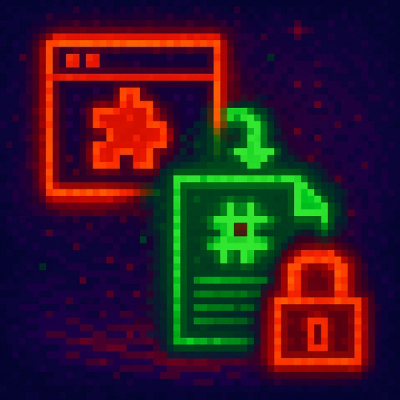
Security News
Another Round of TEA Protocol Spam Floods npm, But It’s Not a Worm
Recent coverage mislabels the latest TEA protocol spam as a worm. Here’s what’s actually happening.
@openfin/here-zero
Advanced tools
HERE Zero is a library that creates a zero-install web-based implementation of a HERE platform. It aims to provide an out-of-the-box, low-code solution for building HERE platforms that run in a standard web browser and can be themed and integrated with a customer’s backend to support application directories and search ("HERE Zero platform" for short).
The HERE Zero packager is a tool that helps configure and build a HERE Zero platform based on the core-web package. Its output is an application that you can host. It handles:
here-zero
The HERE Zero packager requires a configuration file as its entry point. The file must be called here.config.js (.ts, and .mjs are also supported) and must exist in the project root directory.
here.config.ts
import { defineConfig } from '@openfin/here-zero';
export default defineConfig({
overrides: {
file: './overrides.js'
},
outputDir: './dist',
// Optional: Configure custom logos
logo: {
searchCommandBar: 'path/to/your/logo.ico',
newTab: 'path/to/your/logo.ico'
},
// Optional: Configure title for the application
title: 'Here® Web App',
// Optional: Configure favicon for the application
favicon: 'path/to/your/favicon.ico'
});
overrides: Specify the path to your overrides file
file: Path to your client-side JavaScript overrides fileoutputDir: Directory where built files will be placedlogo: (Optional) Customize logos in different parts of the application
searchCommandBar: (Optional) Logo for the search command barnewTab: (Optional) Logo for new tabstitle: (Optional) Set the title of your HERE Zero platformfavicon: (Optional) Set the favicon for your HERE Zero platformYou can supply content to the HERE Zero platform, such as featured apps, launcher entries, and search results, allowing the platform to display dynamic or custom content tailored to your environment. To do this, you provide a JavaScript file that defines the content "overrides" that you want to display.
overrides.js
The filename must match overrides.file in the configuration definition.
IMPORTANT: The HERE Zero packager does not handle building or bundling the provided overrides file. This file executes in a browser context, so it must contain valid client-side JavaScript.
const { defineOverrides } = require('@openfin/here-zero');
defineOverrides({
content: {
fetchFeaturedContent: async () => {
// Return array of featured content items
return [
{
title: 'Example App',
url: 'https://example.com',
iconUrl: 'https://example.com/favicon.ico',
type: 'app'
}
];
},
fetchLauncherContent: async () => {
// Return array of launcher content items
return [
{
title: 'Example App',
url: 'https://example.com',
iconUrl: 'https://example.com/favicon.ico',
type: 'app'
}
];
},
getInitialContent: () => {
// Return initial content for user consumption
// This can return an InitialContent object directly (synchronous) or a Promise<InitialContent> (asynchronous)
return {
content: [
{
title: 'Welcome',
url: 'https://example.com/welcome',
iconUrl: 'https://example.com/favicon.ico',
type: 'app'
}
]
};
}
},
search: {
handleSearchQuery: async ({ query }) => {
// Handle search queries and return results
return {
items: [
{
title: 'Search Result',
url: 'https://example.com',
iconUrl: 'https://example.com/favicon.ico',
type: 'app'
}
],
totalCount: 1
};
}
}
});
In order to generate a HERE Zero platform, you run the HERE Zero packager.
It produces an application in the outputDir specified in the configuration file.
You can host and run this application as your HERE Zero platform.
Example package.json scripts section:
...
"scripts": {
"serve": "npx http-server dist -p 8080",
"start": "npm run serve",
"build": "npm run build:overrides && npm run build:here",
"build:overrides": "rollup -c",
"build:here": "here-zero"
},
...
On a successful build, the packager does the following:
outputDir declared in the config if it doesn't existoverrides file into the HERE web entry pointThe HERE Zero platform includes built-in support for HERE Web Interop APIs via the @openfin/core-web library.
The HERE Zero platform application includes a core-web Web broker, preconfigured with smart defaults.
For example: content placed within supertabs is automatically context-bound. We recommend setting the connectionInheritance property to "enabled" on the content contexts in order to connect to the preconfigured broker.
FAQs
CLI packager for HERE Web
The npm package @openfin/here-zero receives a total of 150 weekly downloads. As such, @openfin/here-zero popularity was classified as not popular.
We found that @openfin/here-zero demonstrated a healthy version release cadence and project activity because the last version was released less than a year ago. It has 66 open source maintainers collaborating on the project.
Did you know?

Socket for GitHub automatically highlights issues in each pull request and monitors the health of all your open source dependencies. Discover the contents of your packages and block harmful activity before you install or update your dependencies.

Security News
Recent coverage mislabels the latest TEA protocol spam as a worm. Here’s what’s actually happening.

Security News
PyPI adds Trusted Publishing support for GitLab Self-Managed as adoption reaches 25% of uploads

Research
/Security News
A malicious Chrome extension posing as an Ethereum wallet steals seed phrases by encoding them into Sui transactions, enabling full wallet takeover.